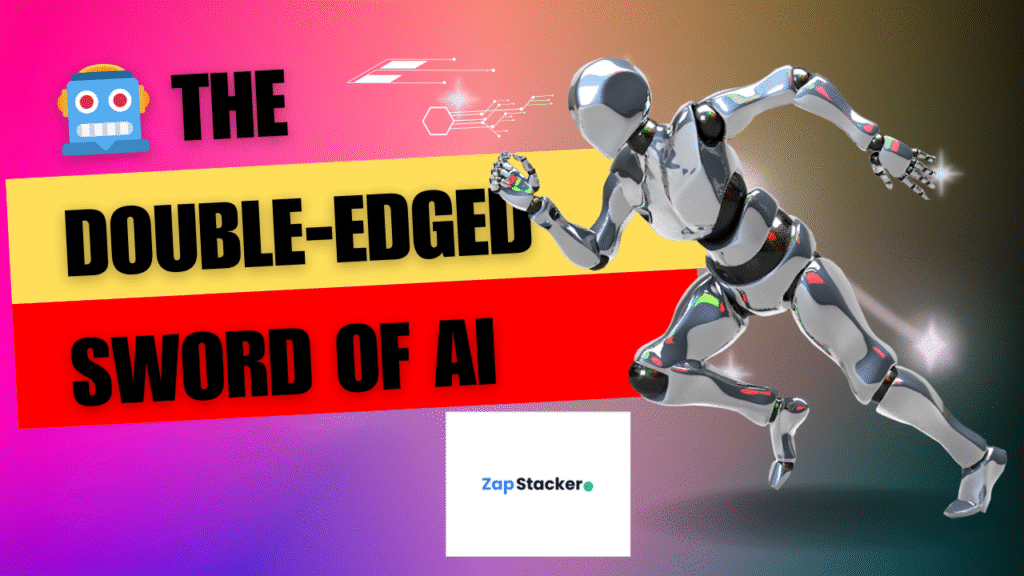
🌍 Introduction
Artificial Intelligence (AI) is no longer science fiction — it’s part of our everyday reality. From voice assistants to facial recognition, chatbots to self-driving cars, AI is deeply woven into how we live, work, and connect.
But as with any powerful technology, AI is a double-edged sword. On one side, it offers unprecedented benefits — speed, automation, personalization. On the other, it raises serious concerns — privacy, bias, job displacement, even autonomy.
So, how exactly is AI helping and potentially harming us?
Let’s break it down, simply and clearly.
✅ The Benefits of AI for Humans
1. Automation of Repetitive Tasks
AI helps automate time-consuming, manual tasks — like sorting emails, entering data, or scheduling meetings. This saves time and reduces human error in industries like healthcare, finance, and logistics.
2. Smarter Healthcare
AI assists in early diagnosis (e.g. cancer detection), drug development, and even robotic surgeries. It helps doctors analyze large datasets to make quicker, more accurate decisions — sometimes better than humans.
3. Improved Accessibility
Voice recognition, real-time translation, and AI-driven tools support people with disabilities. For example, AI can read out content to visually impaired users or translate sign language into speech.
4. Personalized Experiences
AI algorithms power product recommendations, content suggestions, and even music playlists based on user behavior. From Netflix to Amazon, AI tailors digital experiences uniquely for you.
5. Faster Problem Solving
AI is used in research to simulate complex models — like predicting climate patterns, modeling pandemics, or discovering new materials. Tasks that once took years can now be done in days.
⚠️ The Dangers and Risks of AI
1. Job Displacement
AI and automation can replace human workers, especially in low-skill, repetitive jobs. While new tech jobs are created, the transition can be painful and lead to economic inequality.
2. Bias and Discrimination
AI is only as fair as the data it’s trained on. If that data reflects bias (racial, gender, etc.), AI can unintentionally amplify discrimination in things like hiring, lending, or law enforcement.
3. Loss of Privacy
AI-driven systems often collect vast amounts of personal data. Without proper regulations, this can lead to misuse, surveillance, or identity theft — sometimes without users even knowing.
4. Autonomous Weapons
There’s growing concern over the use of AI in military applications — especially self-operating drones or robots. If misused or hacked, such weapons pose a threat to humanity itself.
5. Dependency and Human Skill Loss
Relying too heavily on AI may reduce human problem-solving and critical thinking. The fear? We forget how to think deeply or solve problems without digital help.
🧭 Where Do We Go From Here?
The future of AI depends on how we use it. It’s not AI that’s good or bad — it’s how it’s designed, controlled, and deployed. Responsible AI development, ethical design, and transparent usage are critical.
Here are a few key principles:
- ✅ Build AI that enhances human abilities, not replaces them.
- ✅ Train AI on diverse, inclusive, and fair datasets.
- ✅ Be transparent about how AI systems work and what data they use.
- ✅ Protect privacy through strong digital rights.
- ✅ Involve public voices in how AI policies are shaped.
🧠 Conclusion
Artificial Intelligence is one of humanity’s most powerful inventions — and like fire, electricity, or the internet, it can be used to create or destroy.
Used wisely, AI can help us solve some of the world’s biggest challenges.
Used recklessly, it could deepen inequality and risk our freedom.
The question isn’t whether AI will shape our future.
It’s whether we’ll shape AI with human values at its core.
